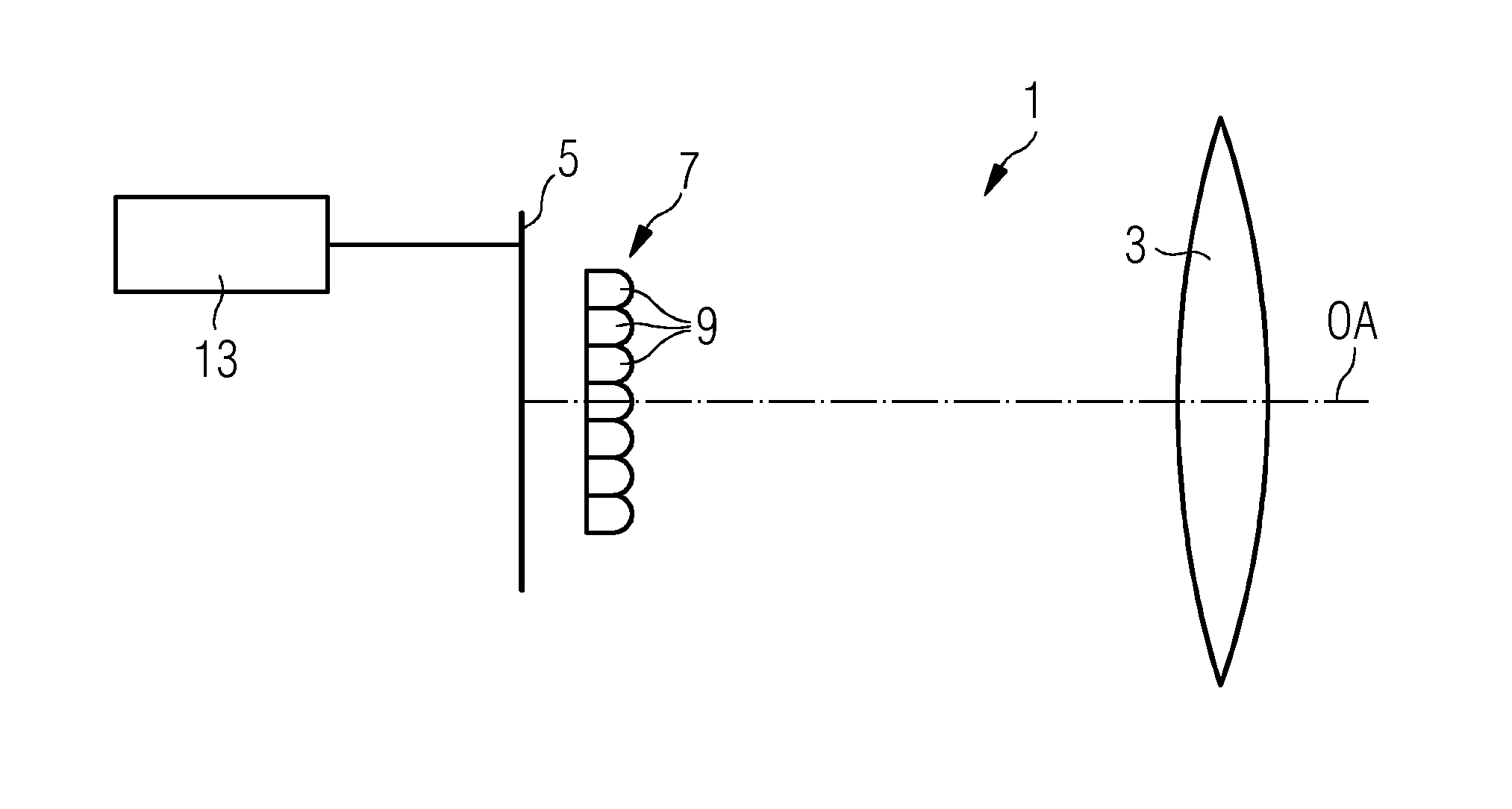Method of and device for capturing 3D data of one or more airborne particles
a technology of airborne particles and 3d data, which is applied in the direction of instruments, vessel parts, vessel construction, etc., can solve the problems of limited to either point on a line, and achieve the effects of optimizing power output, reducing blade load, and optimizing power outpu
- Summary
- Abstract
- Description
- Claims
- Application Information
AI Technical Summary
Benefits of technology
Problems solved by technology
Method used
Image
Examples
Embodiment Construction
[0023]Prior to describing the method, the main optical components of a plenoptic camera will be described with respect to FIGS. 1 and 2.
[0024]FIG. 1 shows the arrangement of the main optical components of a plenoptic camera 1 in a section taken along the optical axis OA of the components. The plenoptic camera 1 comprises a main lens 3, an image sensor 5, which could be a CCD-sensor (CCD: charge coupled device) or a CMOS-sensor (CMOS: complementary metal oxide semiconductor), and a lenticular array 7, i.e. an array of microlenses 9, arranged in front of the image sensor 5. A view onto the lenticular array 7 in a direction along the optical axis OA is shown in FIG. 2.
[0025]One may think of each microlens 7 of the lenticular array as being a tiny camera that forms an image of the main lens aperture on the sensor 5. Since the mircolenses 9 of the lenticular array 7 are distributed in a plane perpendicular to the optical axis OA each tiny image formed by a microlens 9 represents a slight...
PUM
 Login to View More
Login to View More Abstract
Description
Claims
Application Information
 Login to View More
Login to View More - R&D
- Intellectual Property
- Life Sciences
- Materials
- Tech Scout
- Unparalleled Data Quality
- Higher Quality Content
- 60% Fewer Hallucinations
Browse by: Latest US Patents, China's latest patents, Technical Efficacy Thesaurus, Application Domain, Technology Topic, Popular Technical Reports.
© 2025 PatSnap. All rights reserved.Legal|Privacy policy|Modern Slavery Act Transparency Statement|Sitemap|About US| Contact US: help@patsnap.com



